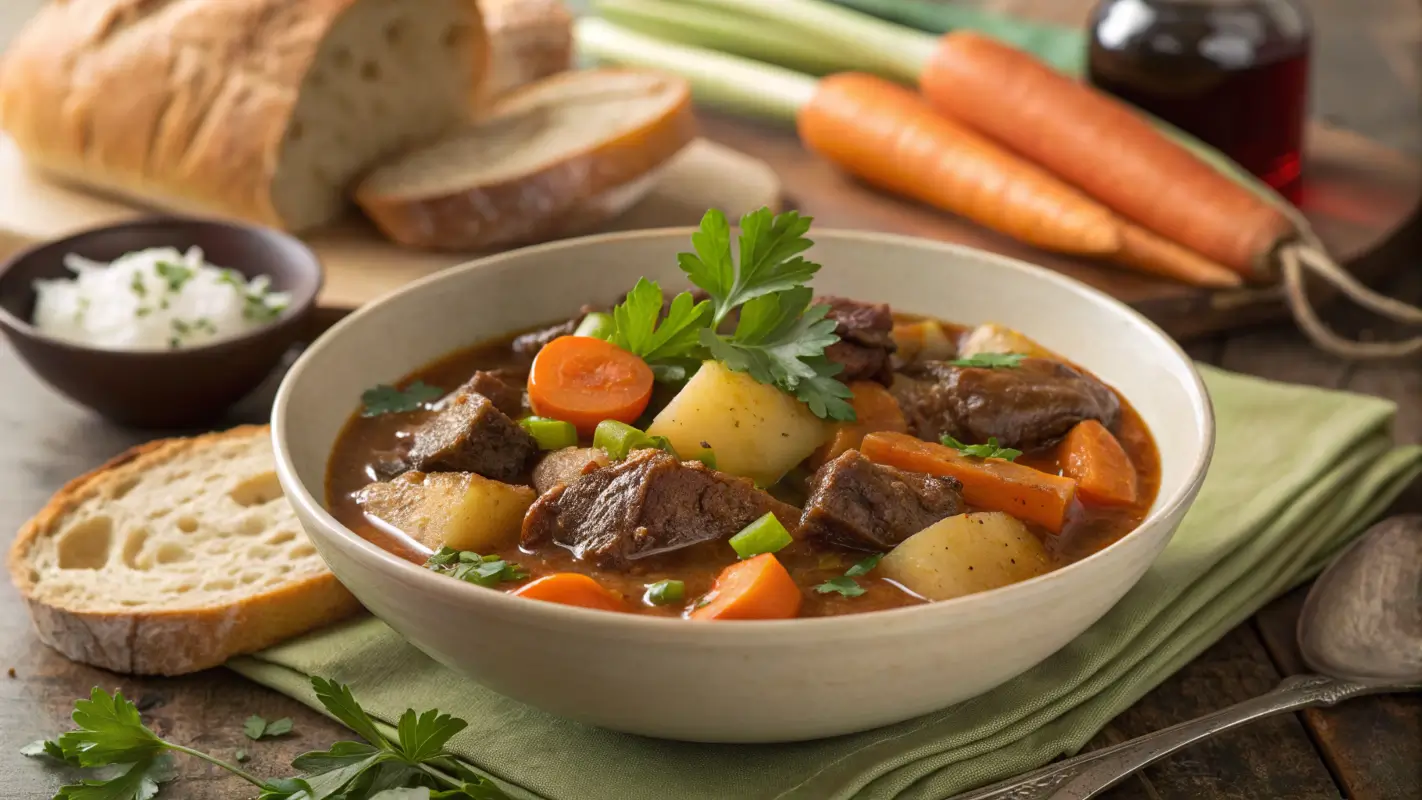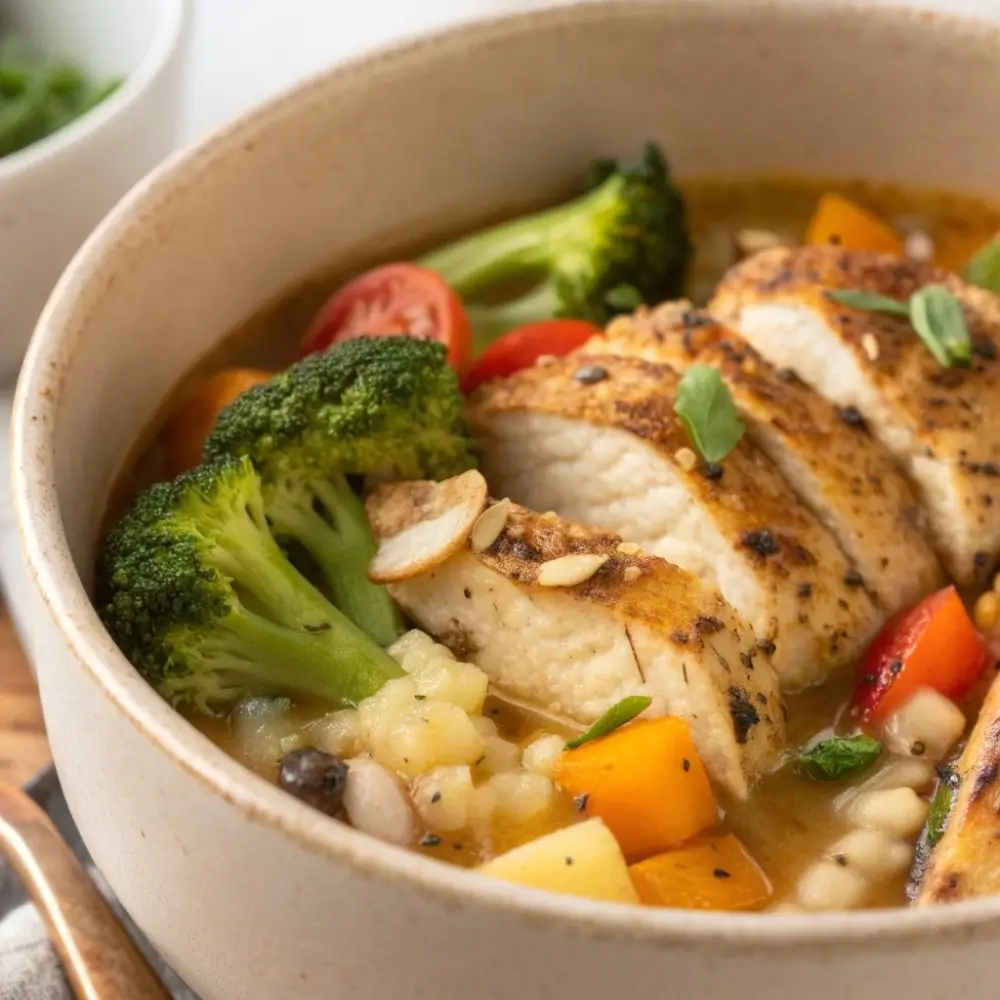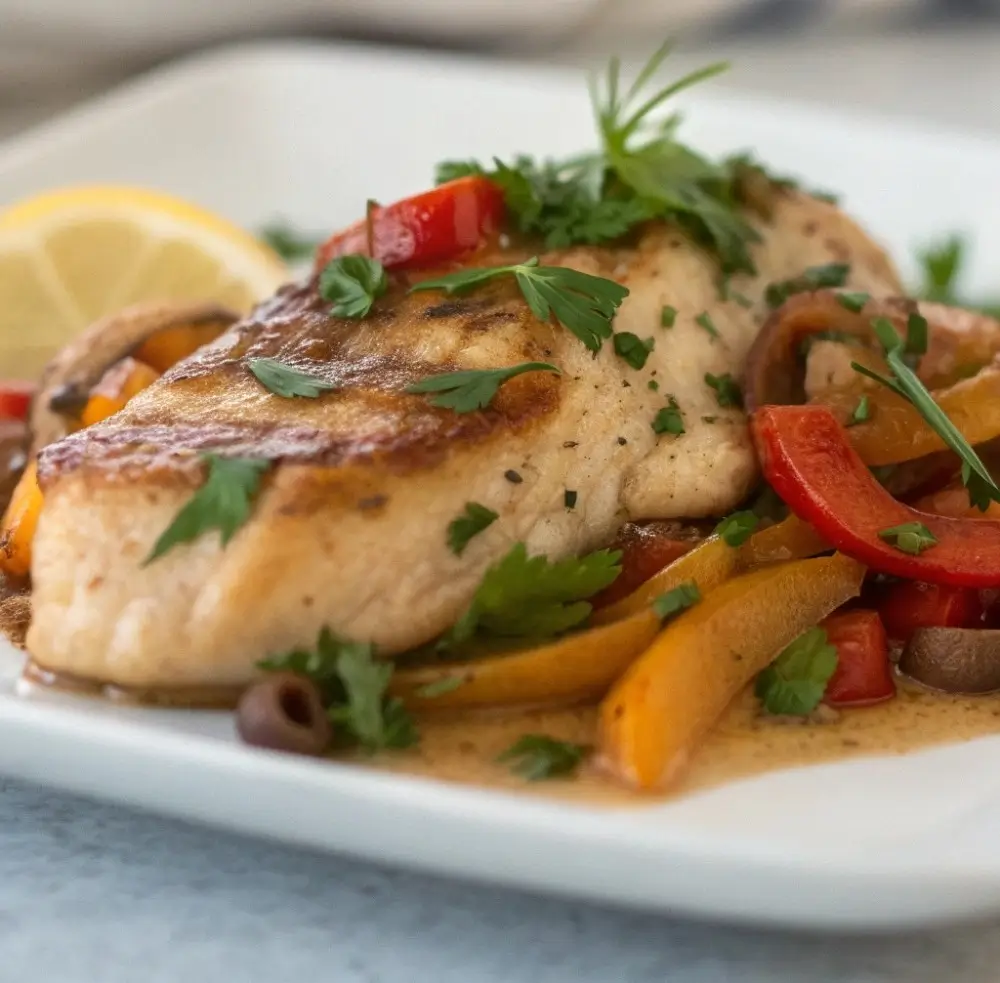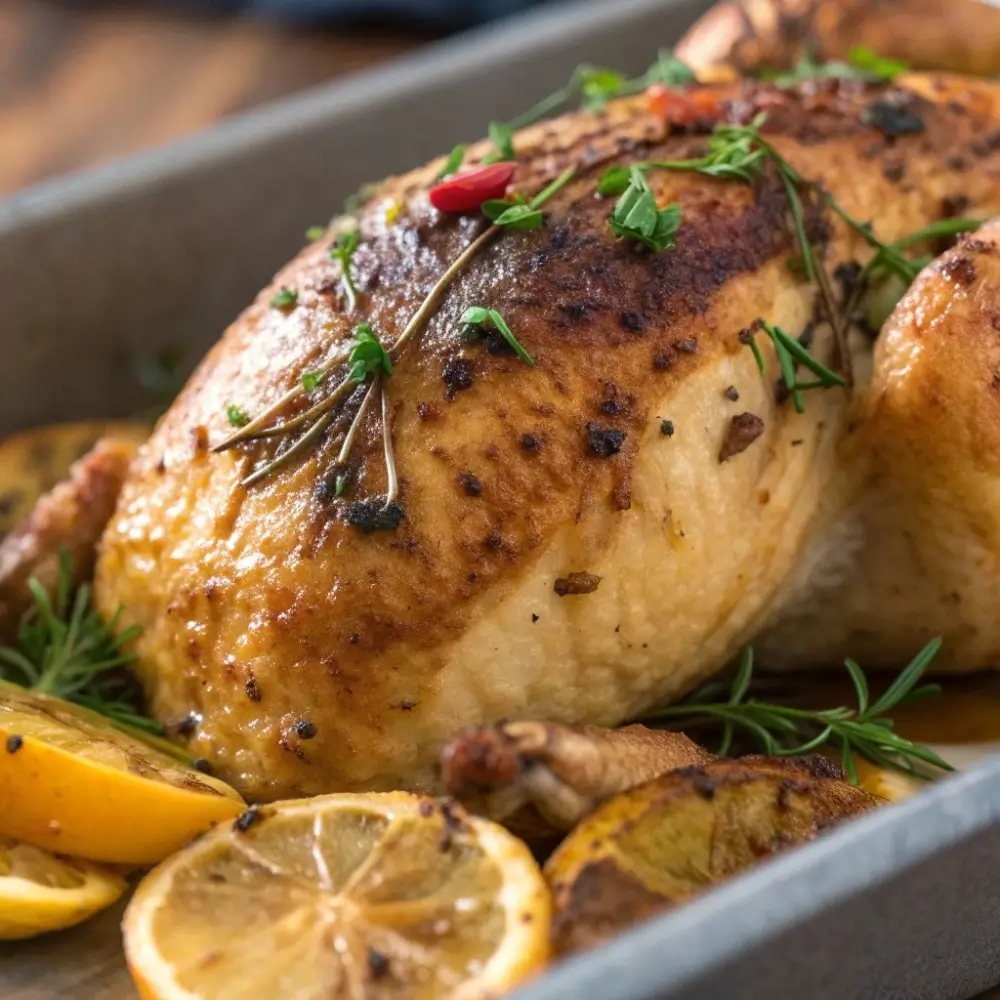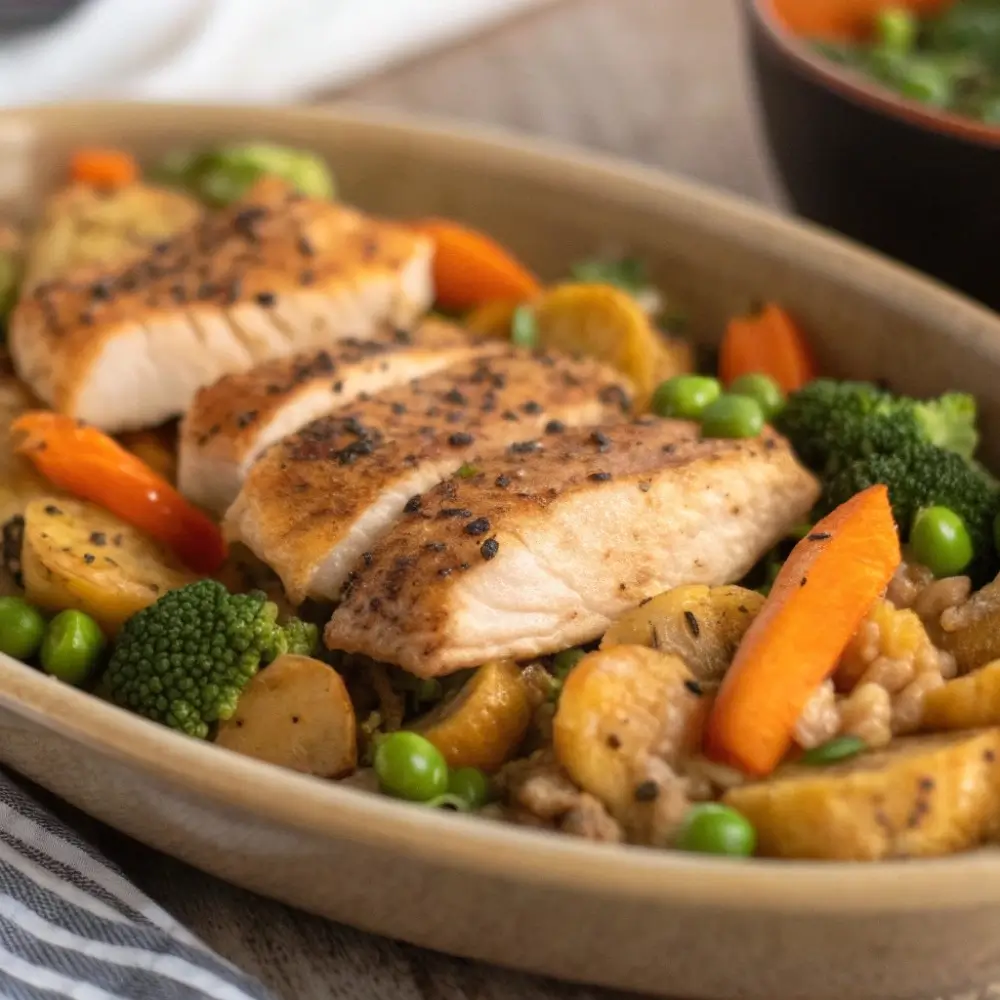Table of Contents
Venison stew is a comforting, hearty dish that many people enjoy, especially during the colder months. The rich, savory flavors of tender venison, paired with fresh vegetables and the perfect mix of seasonings, create a meal that warms both the body and soul. But creating the perfect venison stew recipe requires understanding the meat, the ingredients, and the techniques that bring it all together. Whether you’re a seasoned cook or a novice, this article will guide you through making a delectable venison stew from scratch. We’ll explore everything from choosing the right cut of meat to preparing the dish in a slow cooker or an Instant Pot.
Introduction to Venison Stew
What is Venison Stew?
Venison stew is a classic comfort food that has been enjoyed for generations. It’s typically made with venison meat, which comes from a deer, and simmered slowly to create a tender, flavorful dish. Unlike beef stew, venison offers a slightly gamey flavor that pairs beautifully with earthy vegetables and aromatic herbs. When cooked properly, venison stew becomes melt-in-your-mouth tender, making it a perfect meal for any occasion, from a cozy family dinner to a rustic outdoor feast.
Nutritional Benefits of Venison
One of the main reasons people choose venison is for its health benefits. Unlike beef, venison is a leaner meat, meaning it contains less fat while still being packed with protein. It is also rich in iron, zinc, and essential vitamins that help support a healthy immune system. If you’re looking for a nutritious and filling dish, venison stew is an excellent choice.
Venison is also lower in calories compared to other red meats, making it a great option for anyone watching their caloric intake but still craving a rich, flavorful stew. It’s an all-around healthy meat choice that provides a wide range of nutrients, which is why it’s a popular choice for stew recipes.
Selecting the Right Venison Meat
When making venison stew, the cut of meat you choose can significantly affect the texture and flavor of your dish. While any cut of venison can technically be used for stew, some cuts are better suited to slow cooking and simmering. Stew meat, which typically comes from tougher cuts like the shoulder, neck, or shank, is ideal because these cuts become tender and flavorful when cooked low and slow.
You can also use venison from a deer roast or venison steaks, though these may require a bit more attention to ensure the meat doesn’t become too tough. If you’re new to cooking venison, ask your butcher to recommend cuts specifically for stews—they’ll often be willing to provide some great tips!
Essential Ingredients for Venison Stew
When making venison stew, the key to a flavorful dish is the combination of high-quality ingredients. From the venison itself to the vegetables, broth, and seasonings, each component plays a crucial role in creating a stew that is both rich and satisfying. Let’s take a look at the core ingredients you’ll need to craft the perfect venison stew.
Core Ingredients
Venison Meat
First and foremost, the star of your stew is the venison itself. As mentioned before, cuts like stew meat, shoulder, or shank work best for a slow-cooked stew. These cuts have enough connective tissue that breaks down during the cooking process, adding depth and richness to the broth.
You’ll want to trim any excess fat and cut the meat into bite-sized cubes. If you’re looking for an even more tender texture, marinating the venison overnight in a mix of olive oil, garlic, and herbs can help infuse more flavor while tenderizing the meat.
Vegetables
For a well-rounded stew, you’ll need a variety of vegetables. Here are some essential ones to include:
- Carrots: These add a subtle sweetness that balances the earthiness of the venison.
- Potatoes: Use waxy potatoes like Yukon Gold, which hold their shape well while cooking, adding a creamy texture to the stew.
- Onions: Onions form the flavor base of the stew and help to create that savory aroma as they cook down.
- Celery: Adds a touch of crunch and freshness, complementing the softer textures of the other vegetables.
Feel free to experiment with other vegetables, such as parsnips, turnips, or sweet potatoes, depending on the season or your preferences.
Broth
The foundation of any great stew is the broth. While beef broth is often the go-to choice for venison stew, you can also opt for vegetable broth if you’re looking for a lighter flavor. The broth helps tenderize the venison while bringing all the flavors together. A rich, well-seasoned broth makes all the difference, so consider making your own homemade stock or choosing a high-quality store-bought option.
Herbs and Spices
Herbs and spices are the unsung heroes of venison stew. They elevate the stew’s flavor profile, making each bite more aromatic and savory. Some classic choices include:
- Thyme: Adds an earthy, herbaceous note to the stew.
- Rosemary: Pairs wonderfully with venison and gives it a slightly piney flavor.
- Bay leaves: A few bay leaves enhance the stew’s depth with their slightly floral and herbal taste.
- Garlic: Fresh garlic adds a pungent kick that complements the rich flavors of the meat.
Don’t be afraid to get creative! A pinch of paprika, black pepper, or a dash of cayenne can add an extra layer of complexity to the stew.
Optional Additions
While the core ingredients will form the base of your venison stew, there are several optional additions that can take it to the next level:
- Mushrooms: Adding mushrooms brings an earthy depth and umami flavor that complements the venison.
- Juniper Berries: For a unique twist, juniper berries add a sharp, slightly piney flavor that pairs beautifully with venison, making it a popular choice for some venison stew recipes.
- Root Vegetables: Try adding root vegetables like parsnips or turnips for a touch of sweetness and added texture.
- Tomatoes: Some people enjoy adding tomatoes (either fresh or canned) for a hint of acidity that balances the rich flavors of the meat.
Preparation Techniques
Making the perfect venison stew involves more than just throwing ingredients into a pot. The way you prepare and cook the stew affects the final result. Whether you’re using a slow cooker, pressure cooker, or stovetop method, following these preparation techniques will help you get the most flavor and tenderness out of your venison.
Marinating the Venison
One of the best ways to ensure tender, flavorful venison in your stew is to marinate it before cooking. Venison can sometimes have a strong gamey flavor, and marinating helps to mellow that out while adding layers of flavor.
A simple marinade made of olive oil, garlic, rosemary, and bay leaves works wonderfully. If you have more time, you can let the venison sit in the marinade for a few hours or even overnight in the fridge. Not only will this tenderize the meat, but it will also infuse it with aromatic flavors that will complement the stew’s broth.
Browning the Meat
Before adding your venison to the stew pot, it’s important to brown it. This step may seem like an extra chore, but it adds a lot of flavor to the dish. When the venison is browned, it creates a rich, savory crust that enhances the depth of flavor. To do this:
- Heat some oil in a large skillet over medium-high heat.
- Add the venison cubes in small batches to avoid overcrowding.
- Brown the meat on all sides, then remove it and set it aside.
Browning the venison first will make a huge difference in the final taste of the stew.
Sautéing Vegetables
While the venison is browning, take the opportunity to sauté your vegetables. Start by heating a bit of olive oil or butter in a large pot or Dutch oven. Add your onions, garlic, and celery, cooking until they’re softened and fragrant. This step helps release the natural sugars in the vegetables, making the stew even more flavorful.
Once your vegetables are sautéed, add the browned venison back into the pot and stir everything together. This will allow the meat and vegetables to begin melding flavors before the broth is added.
Slow Cooking vs. Pressure Cooking
Now comes the cooking method, and this is where the magic happens. There are two main ways to cook venison stew: slow cooking and pressure cooking.
-
Slow Cooker: The slow cooker is perfect for venison stew. It allows the flavors to develop over several hours, giving the venison time to become tender and absorb all the aromatic herbs and spices. If you choose this method, set your slow cooker to low and let it cook for about 6-8 hours.
-
Pressure Cooker/Instant Pot: If you’re short on time, a pressure cooker or Instant Pot can cut the cooking time down to just 1-2 hours. This method will also give you tender meat, but you may need to adjust the seasonings to account for the faster cooking process.
Regardless of the method you choose, make sure to check for seasoning and adjust salt and pepper to taste before serving.
Serving Suggestions
Now that you’ve mastered making a rich, flavorful venison stew, it’s time to think about how to serve it. Venison stew is versatile and pairs well with many side dishes and garnishes, elevating the meal and making it even more satisfying. Whether you’re looking to complement the stew with something simple or want to go all out with a full dinner spread, these serving suggestions will help you make the most of your venison stew.
Side Dishes to Pair with Venison Stew
1. Crusty Bread
Nothing beats a warm, crusty loaf of bread when serving stew. Whether you choose a baguette, sourdough, or a rustic country loaf, the crispy crust and soft interior are perfect for sopping up the flavorful broth of the venison stew. You can also serve garlic bread or buttered rolls for added richness.
2. Mashed Potatoes
For a hearty and comforting side, serve your venison stew with mashed potatoes. The smooth, creamy potatoes pair beautifully with the savory, tender venison and soak up the delicious broth. If you’re feeling adventurous, you can make garlic mashed potatoes or add a hint of cream cheese for extra richness.
3. Roasted Vegetables
Roasted vegetables, such as brussels sprouts, carrots, and parsnips, are a great way to bring out more earthy flavors. The natural sweetness of roasted veggies balances the savory taste of the venison stew and adds variety in texture. Simply toss the vegetables in olive oil, salt, pepper, and herbs, and roast until golden brown.
4. Rice or Polenta
For a gluten-free option, consider pairing your venison stew with rice or polenta. Brown rice or wild rice add a nutty flavor and chewy texture that complements the stew. If you prefer something a little richer, serve it with creamy polenta, which will absorb the stew’s broth and add a soft, velvety texture.
Garnishes for Venison Stew
While venison stew is delicious on its own, adding a few garnishes can enhance both the flavor and presentation. Consider these simple but effective garnishes:
- Chopped Fresh Parsley: Adds a touch of color and freshness to balance the rich flavors of the stew.
- Cracked Black Pepper: A light sprinkle of freshly cracked black pepper enhances the flavors and adds a little spice.
- Grated Cheese: A sprinkle of grated Parmesan or Gruyère cheese can add a delicious salty finish to the stew.
- Sour Cream or Yogurt: A dollop of sour cream or plain yogurt can add a creamy, tangy contrast that balances the rich, gamey venison.
Learn about the health benefits of venison meat on Healthline.
Frequently Asked Questions (FAQs)
1. Can I use any type of venison for stew?
Yes, you can use almost any type of venison for stew, but the best cuts for slow cooking are tougher cuts such as shank, neck, or shoulder. These cuts have more connective tissue, which breaks down during cooking, making the meat tender and flavorful. You can also use venison stew meat, which is typically pre-cut and ready for stews.
2. How can I make venison stew less gamey?
If you find that the venison has too strong of a gamey flavor, marinating the meat overnight in a mixture of olive oil, garlic, and herbs can help mellow out the taste. Additionally, using a robust broth, such as beef or vegetable broth, and adding aromatic herbs like rosemary and thyme can mask any unwanted gamey flavors. A splash of vinegar or lemon juice can also add brightness and balance.
3. Can I freeze venison stew?
Absolutely! Venison stew freezes very well and can be stored in an airtight container for up to 3 months. Just be sure to let the stew cool completely before freezing. When you’re ready to eat it, defrost it in the fridge overnight and reheat it on the stove or in the microwave.
4. How can I make venison stew spicier?
If you like a bit of heat, consider adding cayenne pepper, red pepper flakes, or jalapeños to your stew. You can also experiment with chipotle or smoked paprika to add both heat and depth of flavor. Adjust the spice level to your liking by starting with a small amount and tasting as you go.
5. Can I use a slow cooker or Instant Pot for venison stew?
Yes, both the slow cooker and Instant Pot are excellent tools for making venison stew. The slow cooker allows for slow simmering, which helps tenderize the meat over several hours, while the Instant Pot provides a quicker method, reducing the cooking time to just 1-2 hours. Both methods yield a delicious and tender venison stew!
Now that you know the answers to some common questions, let’s move on to some related recipes that you might enjoy if you’re a fan of venison stew.
If you love venison stew, there are plenty of other delicious venison-based dishes that are worth trying. Here are a few related recipes that will take your love for venison to the next level.
1. Venison Chili
This hearty and flavorful venison chili is a great option for colder weather. With a mix of ground venison, beans, tomatoes, and chili spices, it’s a comforting and filling meal. Add a little extra heat with jalapeños or chili powder for a spicy kick.
2. Venison Shepherd’s Pie
A twist on the traditional shepherd’s pie, this version uses tender venison as the filling, topped with mashed potatoes. It’s the perfect comfort food for a family dinner. The rich, savory venison filling pairs beautifully with the creamy mashed potatoes.
3. Venison Meatballs
If you’re looking for a lighter option, try making venison meatballs. Made with ground venison, breadcrumbs, herbs, and spices, these meatballs are perfect for a sandwich, a pasta dish, or as a stand-alone appetizer. They’re a great way to enjoy the flavor of venison in bite-sized portions.
4. Venison Tacos
For something fun and different, try using ground venison to make delicious tacos. With toppings like salsa, guacamole, and fresh cilantro, these venison tacos are a tasty and unique way to enjoy the lean meat. You can also swap in venison steaks and cook them up for a venison taco filling.
